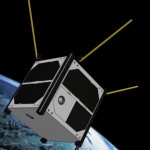There has been much discussion about the increasing possibilities available to existing systems by using the Internet of Things for two way transmission of data for logging and control purposes. However there is so much more than just working with data in a more efficient and cheaper method.
The concept and reality of the Internet of Things also allows devices to have increased levels of intelligence to further their defined tasks. This may sound like science-fiction, however it is possible – and already demonstrated in may consumer devices. For example – recent smart phones can download and install operating system updates without any intervention by or technical knowledge required from the user.
Using this same method your IoT devices – if designed appropriately – can be updated with new firmware just like our example smart phones. You can do this with two methods – by either using existing hardware such as “Electric Imp” modules that can be fitted in existing hardware, or creating new or re-designed hardware with the appropriate microcontroller/wireless chip combination.
When your devices can remain connected – or connect when necessary, they can also offload processing requirements to the cloud service or other connected server hardware. By programming your devices to simply send, receive and act on data the processing work can be offloaded to the server-side, reducing the requirement for faster device CPU speed, memory and so on. This in turn can reduce the hardware purchase cost, physical size, and also the power requirements for the device – saving money at all stages of operation.
All this sounds great – and has been put into practice in many fields. Let’s run through a few examples from a wide variety of examples.
Remote Point-of-Sale devices – Within the broad field of vending machines, point-of-sale devices, unattended ticketing machines and more – so much can be done to make stakeholders’ lives easier and cheaper. Product prices can be updated in real-time; data from the POS machine can be served to the central host giving real-time data and sales analysis; environmental data can be used to price cold drinks in real-time – for example when the local temperature increases or you know a certain area will be busier than usual – increase the drink price. The concept of supply and demand can be tweaked to your advantage with the right technology. And of course service calls and device monitoring can occur.
Passenger Information Systems – Almost every public transport system has some sort of PIDS (Passenger Information Display System), however their level of usefulness is usually determined by the ability of the system to run on-time. Remote displays may be programmed with timetable data to show when services should arrive, and on-board displays can show the “next station is…” type of data.
LX is an award-winning electronics design company based in Sydney, Australia. LX services include full turnkey design, electronics, hardware, software and firmware design. LX specialises in embedded systems and wireless technologies design. https://lx-group.com.au Published by LX Pty Ltd for itself and the LX Group of companies, including LX Design House, LX Solutions and LX Consulting, LX Innovations.


